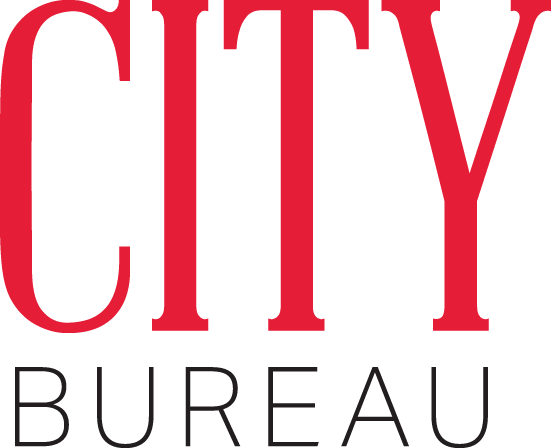Kyra Marcano, executive director of Chicago Run, is continuing the group’s mission to create inclusive physical activity and development programs for youth. “As an adult, you have to be willing to step back and not be the loudest voice in the room.”
By Hector Cervantes
Kyra Marcano, executive director of Chicago Run, poses for a portrait at the Chicago Run office in Fulton Market on June 24, 2025. (Talia Sprague/for City Bureau)
For Kyra Marcano, running started as a weekend ritual with her sister. Casual 5Ks became a lifelong commitment to movement, self-discovery, and resilience.
Now, Marcano, executive director of Chicago Run, shares her passion with youth across the city, empowering them to develop confidence and community.
Chicago Run provides fair access to inclusive, high-quality running and physical activity programs from early childhood through high school, particularly in under-resourced communities of color. A lifelong Chicagoan and Chicago Public Schools graduate, Marcano has been with the organization since 2010, serving in roles ranging from school-site coordinator to board member.
Young people don’t always feel safe in parks by themselves, especially ones where violent crime is more common, some shared during a Chicago Run focus group in the Spring. But group outings such as those with Chicago Run offer a sense of security, they said.
Through the group’s LACE (Leadership, Action, Community, Endurance) Up! program, the organization also offers near-peer mentorship opportunities, paid internships, and leadership roles that allow Chicago Run alumni to return to their neighborhoods and support programs where they first got involved.
Marcano spoke with City Bureau about her group’s work providing fun, healing, and development opportunities for young people throughout the year.
This interview has been condensed and edited for clarity.
how do physical activity and movement affect students’ academic and emotional development, especially in under-resourced communities?
When Chicago Run started [in 2007], recess had been cut from schools and physical education minutes were reduced — the focus was entirely on reading and math. A lot of those supplemental activities, especially in the communities we serve, were often pushed to the side.
School days are becoming increasingly pressured to focus on academic work, to “catch students up,” right? Because they're considered behind due to a variety of factors. Is it what they've experienced in their communities? The lack of resources? The ongoing impact of the pandemic, which is still very real in many ways? The effects of all that are still present. And in the midst of all this, [time for] movement can very easily be lost.
What are the biggest challenges to building trust with young people, especially those who may have experienced instability or trauma?
Young people have a lot of wisdom, and listening doesn’t always mean hearing words. The most common form of communication is behavior, and as an adult, you have to be willing to step back and not be the loudest voice in the room. I think a lot about the small things — it’s not one big thing, but how you show up in many small ways.
Reflecting on my journey from being a classroom teacher to a school leader, I remember a student I had in special education, a middle schooler, when I was a school leader at Namaste Charter School. The simplest thing she said was, “I know that you’re a good leader because when you see me, you say ‘hi.’” That has stuck with me.
Marcano leads a team-building exercise with young coaches during a meeting at the Chicago Run office. (Talia Sprague/for City Bureau)
How does Chicago Run address disparities in access to safe, consistent recreational opportunities for youth on the South and West Sides?
Our model is to go where young people already are. That means we’re removing the barrier of them needing to travel in order to participate, whether that’s at schools or community-based organizations.
Another core aspect of Chicago Run’s model is using minimal equipment. Running is a sport most young people can do naturally, so we introduce them to activities that get them moving without needing much else. While we do provide incentives like jump ropes and water bottles to support them, the focus is really on helping them resource themselves from within. And then the other pieces, like staying within [the] community, understanding the physical environment around them and leaning into trusted community members to help guide that journey.
For example, in our [out-of-school] program Running Mates, we always select a coach who is a trusted adult from the same community — someone the young people already know.
You've worn many hats at Chicago Run. What does it mean to you to lead the organization as executive director?
Something I’ve been focused on throughout the trajectory of my life is where I can make the greatest impact using skills and talents that are unique to me. At this point in my life and career, I feel like the timing is perfect for me to be in this position with Chicago Run, leading during really challenging times. I’m leading Chicago Run right now at a time when our communities are experiencing so much hardship. We face many challenges every day, and the funding environment has become more competitive across the board.
While I could be discouraged by these challenges, I also know that I am someone who can thrive under pressure and do hard things. Running has given me that strength. Plus, knowing so much about Chicago Run and being deeply connected throughout the organization, I feel like I’m in a unique position to tell our story and connect with our communities through lived experience.
Support City Bureau’s Civic Reporting fellowship by becoming a recurring donor.
Check back later to see more of our fellows’ work on youth and summer opportunity.


